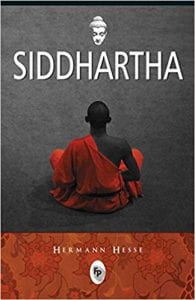This collaborative project is where innovation and modern technology come together. James and I worked together in this movie project along with John and Izaiah from BMSA at Ohio, United States. Where our tasks are to create a screenplay based on our chosen book and a storyboard that follows. While the screenplay and storyboard are created for our BMSA partners, they will take our ideas and combine their skills to create a visual movie trailer. What is a screenplay? A screenplay basically covers everything that actors follow to act out a screenplay—text, action, setting, props, emotion(?), etc…. A storyboard conveys the factors in the screenplay into a more visual and reliable tool for the filmer, approaches for a better product.
Group vs. Individual
Personally, I prefer working within a group more than individual work; however, some people might be vice versa and it’s reasonable! A thought advances me in the characteristic to collaborate better with others than to communicate within myself in an individual work—a skill I would develop so the same ability protrudes for the better when working independently. The same characteristic is actually easy to improvise into working individually. By thinking that in group work, the amount of work is usually divided upon the group, and assuming that the group is receiving independent grades for each, how will you feel if your work is delayed by others and that contributes to affect your grade? Well, I was able to hold that thought throughout group working, not allowing myself to fail others because they don’t deserve whatever the negative outcomes I poured on them. Now that I have analyzed why I have higher efficiency in group working, which I prefer, I conclude the reason that I was allowing myself to delay myself, resulting in lower efficiency, valuing others more than myself, and teaching myself to accept the decision I made. And how does it encourage me to apply this skill while working individually? Simple! but hard: conquer the indulgence.
Communication over 12,000+ Km… Wasn’t Too Bad!
Before writing our screenplay, James and I brainstormed and pictured ideas for their benefits and made sure what we expected them to film is achievable. Unfortunately, we didn’t exchange other social media(s) for more convenient communication. However, we still managed to sent emails back and forth to whatever questions holding us back.
After a few days over our BMSA partners’ due date—feedback for both screenplay and storyboard received nothing… yet, just to make sure our partners have previewed it and acknowledged that they could and should give us feedback, I sent an email to check in. And they’ve responded! replied that they didn’t find anything that they would like us to change.
Siddhartha by Hermann Hesse

“Siddhartha”
Siddhartha by Hermann Hesse via Amazon
Why this book? Well, James chose this book and I agreed after actually read half of the book online, finding the story content to possibly blend in a screenplay really well. Here’s a short summary of the book we’ve chosen, which we also have sent to our BMSA partners to give them a short heads up(!):
Hesse uses religious characters to construct the story structure of Siddhartha, which we easily broke down and wrote the screenplay into (5) acts. Siddhartha, more than a book title, appears to be the main character that would appear in every scene. Luckily we have 2 partners from BMSA, having one partner to play the role of Siddhartha and the other in the play of different characters that he would also play in every act. While formatting the screenplay, I researched some examples in both English and Mandarin, where I saw behind many movie scenes. After research, we decided to simply format our screenplay, but made everything very clear at the same time (partners’ feedback) with good use of screenplay terminologies. Here’s our screenplay:
Already have the skills and experience of creating a storyboard, I directly followed up created a storyboard using Canva‘s template. For each act (from our screenplay), I included 4~6 shots from a camera angles shot list that I’ve archived in the past, as well as movements, expressions, and scene transitions. Although my opinion on my storyboard is pretty boring… repetitive angle shots are used, I have to say it is much more beautiful than my hand drawn. Moreover, it would be much easier for my partners to understand. The storyboard is available below.
Even though I personally think it is unnecessary for our partners to create an independent shot list document because it basically replicates the storyboard. However, in another point of view, it enhances their understanding while spending more time paying attention to details. Here is the shot list, created by our partners:
Challenges I Found… and Faced

“Which direction are you going?”
Raindrops by NeeZhom Photomalaya via Visual Hunt / CC BY-NC-SA 2.0
When good ideas start going in different directions, they would never end up making sense. As different ideas know their main direction, they could have a wider range of messages and end up in one piece.
Who says that miscommunication could only occur between us and BMSA? During the process of writing the screenplay, I realized some factors that contributed to confusing the audience. First, I would like to point out the different abilities we have: work efficiency, habits, and point of view. While both of us were working on the screenplay, there would be some concepts that are misleading to each other, such as emotions and messages one is trying to convey. By work efficiency, James would misplace my point of view and to his and complete the rest of the screenplay before I have time to check again. This would end up being confusing to the audience, where two points of views are displayed in one. Despite the problem, we immediately have plans to the issue by communicating, which we discussed the main direction of where each act is going before any of us starts writing. By the end of completing act 5, I feel like our ideas and perspective blends smoothly together no matter who starts the writing.
Conclusion
The last time I had this kind of experience was in 3rd grade when we were assigned pen pals from the US. Since then, I’ve always wanted another opportunity to have a connection with other students from the US during our school days. This time, this opportunity was even better, being able to collaborate creativity and process into making a product.
I’ve gained a lot of experiences and thoughts throughout this collaborative project. Being a communicator is so much more important than being all out productive, a communicator can revise, revise, revise… while being only productive could cause inconvenience to the other side. Being initiative when a problem occurs, ask them, send an email! waiting doesn’t get the problem solved, according to my current experience discussed above. Starting from the decision of our book, creating the screenplay, and finally the storyboard, communication lies in between all. Without communication, I am 90% sure that I’m not receiving the final video, the remaining 10% is that it’ll probably be nonsense. Overall, communication would anyway remain a great experience regardless of the outcome of the final product, whether I get it or not. Finally, shoutout to John and Izaiah and all the students from BMSA for giving us such a wonderful experience!


“Bio-Med Academy” …………… . “Kaohsiung American School”
Bio-Med Academy by BMSA via Twitter Kaohsiung American School by KAS via kas.tw